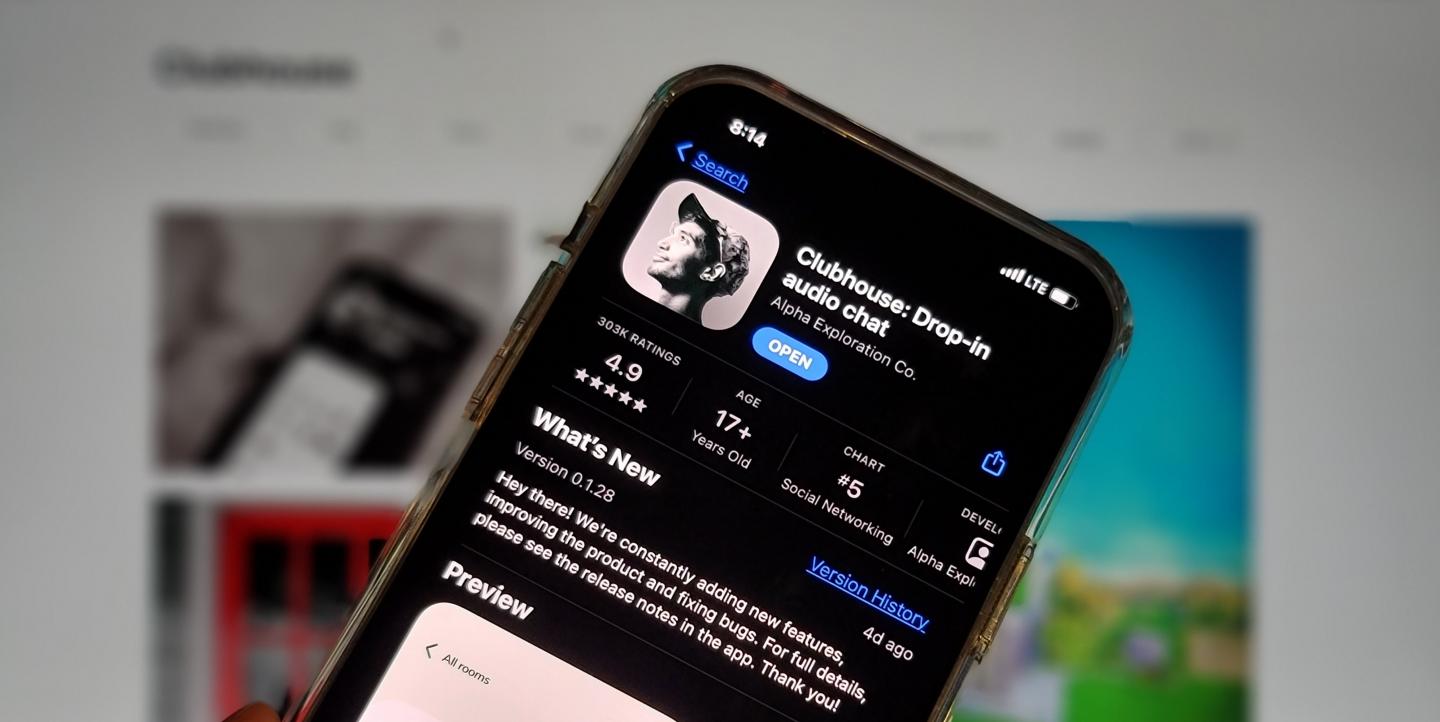You no longer need to write or share visuals to reach a large audience — now, you can just talk. Audio is the new kid on the block when it comes to social media. Twitter has launched Twitter Spaces, and Facebook is also reportedly working on a similar chat app. But taking the lion’s share these days is Clubhouse, which invites iPhone users to enter chat rooms of their choosing and engage in conversations about everything under the sun.
Clubhouse launched in March, 2020, and has already created a lot of buzz. What began as an exclusive group of Silicon Valley employees has since expanded to include celebrities like Tesla’s Elon Musk, Facebook’s Mark Zuckerberg and Drake. It has been downloaded nearly three million times since the first of the year, according to Apptopia.
“The interest and appetite for audio chat apps is getting traction,” said Matt Navarra, social media consultant and former social media manager of thenextweb.com. “It’s hard to tell how much interest is amplified or driven by lockdown and work from home culture and the demand for new content.”
Clubhouse is currently invite-only, meaning you have to be invited by a current member, who only gets a few invitations. This has prompted some users to sell their extra invites on sites like eBay — some for thousands of dollars.
When users open the Clubhouse app, they choose between various rooms. In each room there is a “stage” run by moderators, and an audience who can raise their hands to participate, getting unmuted by the moderators. Audience members can also leave quietly any time they want, allowing them to bop around from room to room easily.
Media companies are closely watching the rise of Clubhouse. According to The New York Times, Barstool Sports has set up a Clubhouse account, and communications and public relations firm Battenhall is hiring a senior Clubhouse executive.
[Read more: Starting a newsroom TikTok? Read our tips.]
According to Navarra, Clubhouse can be a great tool for journalists — both for story gathering and reporting. If you secure an invite, he suggests beginning by lurking around rooms to familiarize yourself. “Learn how people use these apps, and the evolving etiquettes being adopted when participating in audio chats,” he said.
When you’re ready to start using the app for your reporting, it’s critical that you are upfront and transparent about your job and the ways you plan to use the conversations you partake in or overhear.
To get started, Navarra shared with IJNet ways journalists can use Clubhouse to write better stories:
- Dig deeper into a topic and identify sources.
One way to use Clubhouse is to host a room to discuss the subject of their reporting, inviting experts or people impacted by the topic. In this case, you would likely plan the room in advance to book specific people to join the discussion. You could also search for and join rooms that have discussions about specific incidents or topics related to your reporting. If you hear something you were interested in using in the story, you would need to reach out to those you wish to quote to seek their permission or additional insight.
Rather than just using the app for research or source finding, you could also host a room to promote a specific story, inviting other reporters or people impacted by it who might be willing to speak.
- Learn about the public’s perception of a topic and build up case studies.
Sometimes a journalist will tweet or add a line in a story asking for people to share about their own experiences with a topic. You could use Clubhouse in a similar way, creating an audio chat room at a set time for people to join and discuss a topic in more detail. This shouldn’t take the place of private calls, especially if it is a sensitive topic, but you could use this strategy to get insight into how the broader general public feel about a topic, and to identify case studies to follow up with.
- Create exclusive follow-up events for popular stories.
For popular stories, you or your publisher could set up exclusive follow-up sessions for readers to join. Such sessions could feature experts, people involved in the story and/or well-known public figures with a view on the story. These sessions could extend the life of the content and help expand the story for a follow-up piece. These rooms could be an exclusive, paywalled subscriber perk if you’re looking for new revenue.
- Invite key people to chat freely about a topic with the knowledge that a reporter is making notes for reporting purposes.
One Zero journalist Will Ormeus recently joined Navarra and his team in a Clubhouse room. “It was his first experience using the app and participating in a room chat as a speaker,” said Navarrra. “He used it to help frame his understanding of how the platform worked and sought our views of how the app worked as well as its future potential.” What Ormeaus learned from the chat he published in a recent story.
Despite its potential, the app also has some pitfalls. In a tweet, which she later deleted, New York Times technology journalist Taylor Lorenz said she was verbally attacked by venture capitalists and other people in the tech industry on Clubhouse.
[Read more: Q&A with Craig Silverman: Misinformation, deepfakes and democracy]
In a medium post, Lorenz called on users to message her if they have witnessed harassment, disinformation or scams on Clubhouse.
“Right now, it's hard to manage this risk as there are limited tools or features on Clubhouse to manage harassment,” said Navarra. If you’re concerned about harassment, especially when you’re dealing with sensitive topics, Navarra suggested creating your own room and inviting people into the discussion so that you can take advantage of these moderating tools.
“You have greater control over who participates and who can be muted or removed from a room if you created or admin the room rather than simply participating in someone else's,” he added.
Another concern for journalists and media professionals is the potential for misinformation to spread easily and undetected on the app. Cristina Tardáguila, International Fact-Checking Network associate director, wrote in an article for Poynter that Clubhouse’s current design makes it harder for fact checkers to check the accuracy of the information since there is currently no feature that saves old posts or audio files and users are unable to record conversations.
“The lack of these features will produce barriers for fact-checkers,” wrote Tardáguila. “It will be not only hard to choose what club to join but Clubhouse also requires that fact-checkers listen to hours and hours of conversations before selecting what claims should be assessed.”
Natasha Tynes is the founder of Suburban Media Group, and a veteran communications professional with over twenty years of digital communications experience. Her work has appeared in The Washington Post, Elle Magazine, Nature Magazine, The Huffington Post, Esquire magazine, Aljazeera and others.


